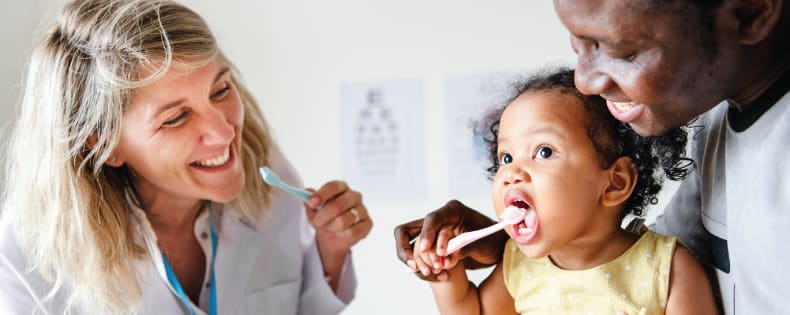Table of Contents
Kids oral health products is a crucial aspect of a child’s overall well-being, and establishing a good dental routine from an early age can set the foundation for lifelong health. With an overwhelming variety of products available, parents often face challenges in selecting the best oral care items for their kids. This guide will explore the essential oral health products for kids, explain why they are important, and provide tips on how to choose and use these items effectively.
The Importance of Oral Health in Children
Oral health in children is directly linked to their overall physical and emotional well-being. Poor dental hygiene can lead to various problems such as cavities, gum disease, and even systemic health issues. Additionally, dental discomfort and visible dental problems can affect a child’s self-esteem, social interactions, and academic performance.
Common Dental Issues in Kids
- Tooth Decay (Cavities): The most common dental problem in children. It can lead to pain, infection, and even tooth loss if untreated.
- Gingivitis: This mild form of gum disease, caused by plaque buildup, can make gums swollen, red, and more prone to bleeding.
- Malocclusion (Misaligned Teeth): Problems with teeth alignment can develop as permanent teeth replace baby teeth, sometimes requiring braces.
- Early Tooth Loss: Losing baby teeth too early due to decay or trauma can lead to alignment problems with adult teeth.
By establishing good oral health practices and using appropriate products, many of these issues can be prevented or mitigated.
Essential Oral Health Products for Kids
1. Toothbrushes
A toothbrush is the foundation of any dental routine, and choosing the right one is essential for effective cleaning and comfortable use.
Types of Toothbrushes
- Manual Toothbrushes: Suitable for young children who are just learning to brush. These are widely available and come in different sizes, colors, and designs to make brushing fun.
- Electric Toothbrushes: Studies suggest that electric toothbrushes can be more effective at removing plaque than manual brushes, especially for children who may struggle with technique. They often come with timers to ensure adequate brushing time.
- Sonic Toothbrushes: Sonic brushes are an advanced type of electric toothbrush that uses sound waves to create vibrations, helping to dislodge food particles and plaque even in hard-to-reach areas.
Features to Look for in Kids’ Toothbrushes
- Soft Bristles: Soft bristles are gentle on young gums and tooth enamel, preventing irritation or damage.
- Size and Grip: Choose a toothbrush with a small head and a handle that fits comfortably in your child’s hand for easy maneuvering.
- Fun Designs: Many kids’ toothbrushes feature popular cartoon characters or come in bright colors to make brushing enjoyable.
2. Toothpaste
Toothpaste is essential for effective plaque removal and provides fluoride to help strengthen teeth and prevent decay.
Choosing the Right Toothpaste
- Fluoride Content: For children under three, only a smear of toothpaste with fluoride content (about 1,000 ppm) is recommended. For children above three, a pea-sized amount of toothpaste with higher fluoride (1,350-1,500 ppm) is suitable.
- Flavor: Many kids dislike the strong minty taste of adult toothpaste. Look for flavors like bubblegum or strawberry that can make brushing more appealing.
- ADA Approval: The American Dental Association (ADA) seal indicates that the toothpaste meets safety and efficacy standards.
3. Mouthwash
While mouthwash is not essential for very young children, it can be a beneficial addition to the oral care routine for older kids who can swish and spit safely.

Types of Mouthwash for Kids
- Fluoride Rinses: These strengthen enamel and prevent decay, ideal for children at risk of cavities.
- Antiseptic Mouthwashes: Designed to kill bacteria, they help control plaque and prevent gum disease. These are usually recommended for kids with braces.
- Alcohol-Free Options: Since many kids dislike the burning sensation of alcohol-based rinses, alcohol-free mouthwashes are typically a better choice for young users.
Tips for Using Mouthwash Safely
- Only introduce mouthwash if your child can reliably spit without swallowing.
- Supervise mouthwash use to ensure proper technique and avoid accidental ingestion.
4. Floss and Flossers
Flossing is essential for cleaning between teeth where a toothbrush cannot reach. Introducing flossing early helps establish a lifetime habit.
Types of Floss for Kids
- Traditional Floss: Dental floss comes in waxed and unwaxed varieties, and many brands offer kid-friendly options in fun flavors.
- Floss Picks: These single-use tools make flossing easier for young kids who may struggle with traditional floss.
- Water Flossers: Although not essential, these are an alternative to traditional floss, using water to remove debris between teeth.
5. Dental Accessories
There are various dental accessories designed to help kids maintain their oral health routine.
- Toothbrush Holders: Fun holders keep toothbrushes organized and hygienic, especially if multiple kids share a bathroom.
- Timers: Timers encourage children to brush for the full two minutes recommended by dentists. Some toothbrushes even come with built-in timers.
- Toothbrushing Apps: These apps can track brushing times and play fun music, making the process more enjoyable.
Establishing a Good Oral Care Routine for Kids
1. Make It Fun
Incorporate games, music, or rewards to make brushing enjoyable rather than a chore. Allowing kids to choose their own toothbrush and toothpaste can also add excitement.
2. Lead by Example
Children often mimic adults, so be sure to demonstrate good brushing habits yourself. Brushing together as a family can be a bonding experience that reinforces positive habits.
3. Use Visuals
Show kids videos or diagrams explaining why brushing and flossing are essential. Visual learning can help kids grasp the concept of removing “sugar bugs” from their teeth.
4. Supervise and Assist
Young children often need help brushing properly. Supervise and assist until they develop the motor skills and understanding needed for effective brushing.
Common Mistakes to Avoid
1. Skipping Flossing
Some parents think flossing isn’t necessary for young children, but flossing is vital to prevent plaque buildup and gum disease.
2. Using Too Much Toothpaste
Using too much toothpaste can lead to ingestion, especially in young children who may swallow it. Always follow age-appropriate guidelines.
3. Ignoring Dental Visits
Regular dental visits are essential for detecting early signs of dental issues and getting professional cleaning and fluoride treatments.
Conclusion
Kids oral health products Maintaining your child’s oral health involves a combination of the right products, a consistent routine, and regular check-ups with a dentist. By selecting age-appropriate toothbrushes, toothpastes, floss, and accessories, parents can make oral care both effective and enjoyable for their children. Establishing these habits early not only protects against cavities and gum disease but also instills a sense of responsibility that can last a lifetime.
FAQ: Kids’ Oral Health Products
1. When should I start brushing my child’s teeth?
You should start brushing as soon as the first tooth emerges, using a soft brush and a tiny smear of fluoride toothpaste.
2. How often should my child brush their teeth?
Children should brush twice daily, once in the morning and once before bed.
3. Can I use adult toothpaste for my child?
No, it’s best to use a children’s toothpaste with an appropriate fluoride level for their age.
4. Is mouthwash safe for young children?
Mouthwash is typically recommended for older children who can rinse and spit without swallowing. Consult your dentist before introducing mouthwash to young children.
5. Should my child floss if they still have baby teeth?
Yes, flossing is recommended for all children as soon as they have two teeth that touch, regardless of whether they are baby teeth or permanent teeth.
By creating a fun, structured approach to dental care and choosing the right products, you can help your child enjoy a lifetime of healthy smiles!
4o
ChatGPT can make mistakes. Check impo




